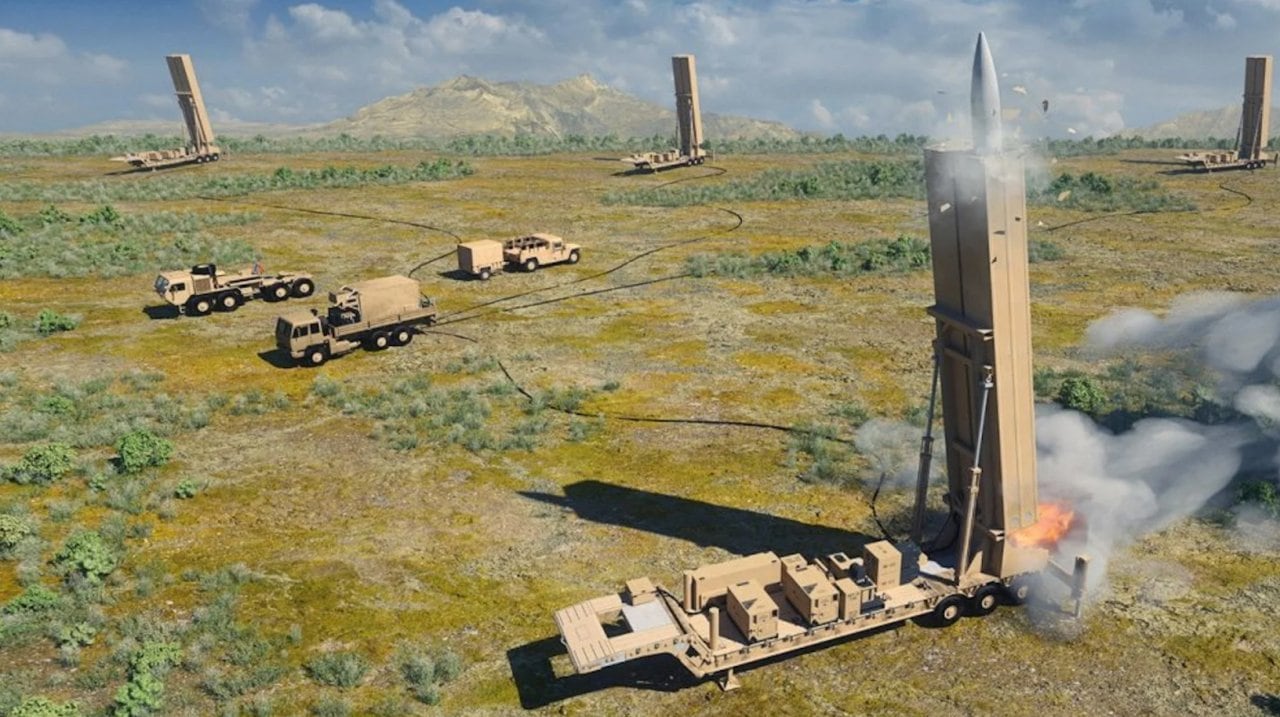Key Point: A recent Department of Defense report sheds shocking light on the shortcomings of the Dark Eagle hypersonic missile’s testing.
What You Need to Know: As China and Russia advance their own hypersonic weapons, the U.S. is racing to maintain its edge.
The Question: But with limited public information, Dark Eagle remains a military enigma—one that could either revolutionize warfare or become another costly black hole.
Dark Eagle: The U.S. Army’s Stealthy Hypersonic Missile Raises Questions
The effectiveness of the Dark Eagle hypersonic missile is an open question, according to a recently released Department of Defense report. The missile, also known as the Long Range Hypersonic Weapon, or LRHW, will arm some of the U.S. Navy’s Virginia-class submarines and give fresh usefulness to the Zumwalt-class destroyers. The surface-to-surface weapon would also see service with the U.S. Army in containerized transporter-erector-launchers too.
Details about the Dark Eagle’s progress — or lack thereof — as well as dozens of other projects currently in development, are detailed in the Office of the Director, Operational Test & Evaluation’s report.
Dark Eagle, Explained
In essence, both the U.S. Army and the U.S. Navy want to field the same hypersonic glide body atop a two-stage rocket booster for high-priority, time-sensitive targets.
Achieving mind-numbingly high hypersonic speeds — in excess of Mach 5, or five times the speed of sound — the Dark Eagle could, in theory, offer the Department of Defense a quick response option for fleeting but high-value targets.
Zumwalt-class
The problem-ridden Zumwalt-class could potentially enjoy a new lease on life thanks to the Dark Eagle. Initially designed as a stealthy destroyer armed with 155mm long-range naval artillery, the Zumwalts were initially envisioned as shore support platforms.
However, the U.S. Navy determined that producing their specialized 155mm artillery shells would be prohibitively expensive, and never put any into production.
But, stripped of their naval artillery (each Zumwalt was designed with a pair of guns) and equipped with Vertical Launch Systems along the destroy’s edges, they’ve been given new life. And with several at the ship’s fore, their missile complement and capabilities could greatly expand.
Testing, Testing
According to the report, the Army is still developing a test strategy for the hypersonic weapon. “The Navy conducted a warhead arena test in 1QFY24 and a sled test in 2QFY24. As noted in the FY22 and FY23 Annual Reports, the initial CPS sled and flight tests did not include operationally representative targets and consequently provided no direct validation of the weapon’s lethal effects.”
Incredibly, the tests appear to have been essentially moot.
The Navy did “included some threat-representative targets in the recent sled test,” However “the Navy, supported by Lawrence Livermore National Laboratories, is still processing the results of these tests.”
Somewhat inexplicably, the Army “has not yet evaluated the effects of a full-spectrum (kinetic, non-kinetic, electromagnetic, cyber) threat-contested environment on the performance of the [missile and launcher]. “This includes an end-to-end cyber survivability testing that includes a cooperative vulnerability and penetration assessment and an adversarial assessment.”
Remarkably, the report simply states that there is “insufficient data are available to evaluate the operational effectiveness, lethality, suitability, and survivability of the LRHW system.”
The report’s Dark Eagle section ends with seven recommendations for the program. The first is perhaps one of the most important. “Continue efforts to develop the LRHW Master Test Strategy that includes integrated testing, operational testing, live fire testing, and cybersecurity assessments to credibly demonstrate the required Dark Eagle operational effectiveness, lethality, suitability, and survivability and submit for DOT&E approval.”
Given the usefulness of weapons like the Dark Eagle in striking far-away, high-priority targets, the importance of their development shouldn’t be underestimated — especially in light of the recent advances made by equivalent Chinese and Russian programs.
That being said, it seems that for now, at least, the U.S. Army and U.S. Navy still have their work cut out for them.
About the Author: Caleb Larson
Caleb Larson is an American multiformat journalist based in Berlin, Germany. His work covers the intersection of conflict and society, focusing on American foreign policy and European security. He has reported from Germany, Russia, and the United States. Most recently, he covered the war in Ukraine, reporting extensively on the war’s shifting battle lines from Donbas and writing on the war’s civilian and humanitarian toll. Previously, he worked as a Defense Reporter for POLITICO Europe. You can follow his latest work on X.

